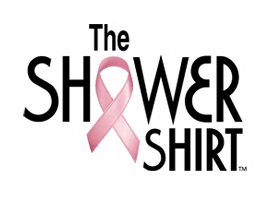Patient Utilization
Patients with End Stage Renal Disease (ESRD)
Central venous catheters (CVC) are responsible for an estimated 250,000 – 400,000 bloodstream infections per year. Colonization of the external surface of the catheter, distal spread of organisms down the catheters’ intraluminal surfaces, and tap water have all been implicated in (CVC) infections. According to the National Kidney Foundation, in trying to decrease the chances of infection, patients should always keep catheter dressings clean and dry.
SAVI™ Radiation Therapy patients
The SAVI™ applicator reduces treatment time from several weeks to just 5 days. Many women consider this an accelerated schedule with a significant benefits, however, the SAVI™ applicator is required to remain dry. The SHOWER SHIRT™ protects the SAVI applicator which is inserted through a small incision in the breast. Patients are routinely instructed by their physicians not to shower, without protection, until the SAVI™ applicator is removed.
Abdominal Hernia patients with post-surgical drains
Abdominal Hernia surgery requires a post-surgical drain which penetrates the skin and can act as a portal for bacteria to enter the wound site. Tap water contains bacteria. Thus exposure to water, while trying to bathe, significantly increases the risk of dangerous post-surgical infections. Patients are routinely instructed by their physicians not to shower, without protection, until abdominal hernia drains are removed.
Patients needing Wound Vacs, Infusion Pumps and External Catheters
Patients required to have Wound Vacs, Infusion Pumps and external catheters require penetration of the skin and can act as a portal for bacteria to enter the wound site. Tap water contains bacteria. Thus exposure to water, while trying to bathe, significantly increases the risk of dangerous post-surgical infections. Patients are routinely instructed by their physicians not to shower, without protection, until the medical paraphernalia is removed.
Patients with Central Lines
Patients required to have Central Lines penetrate the skin and can act as a portal for bacteria to enter the wound site. Tap water contains bacteria. Thus exposure to water, while trying to bathe, significantly increases the risk of dangerous post-surgical infections. Patients are routinely instructed by their physicians not to shower, without protection, until central lines are removed.
Lung surgery & cardio-thoracic patients
Lung Surgery & Cardio-Thoracic patients required to have surgical drains penetrate the skin and can act as a portal for bacteria to enter the wound site. Tap water contains bacteria. Thus exposure to water, while trying to bathe, significantly increases the risk of dangerous post-surgical infections. Patients are routinely instructed by their physicians not to shower, without protection, until post-surgical drains have been removed.
Feeding Tubes & Colostomy Bags
Patients required to have Feeding Tubes or Colostomy Bags are told to keep the dressings clean and dry. Feeding Tubes and Colostomy Bags require drains to penetrate the skin and can act as a portal for bacteria to enter the wound site. Tap water contains bacteria. Thus exposure to water, while trying to bathe, significantly increases the risk of dangerous post-surgical infections. Patients are routinely instructed by their physicians not to shower, without protection, until medical paraphernalia has been removed.
